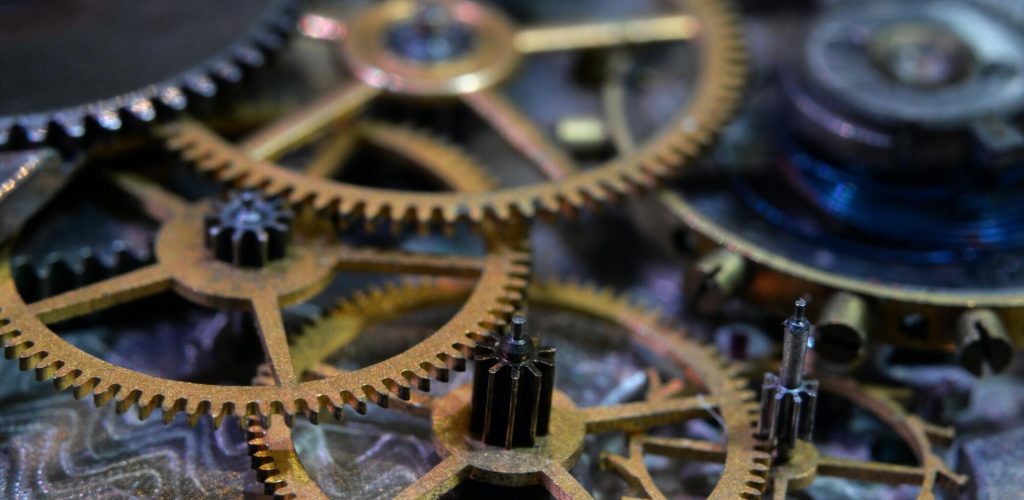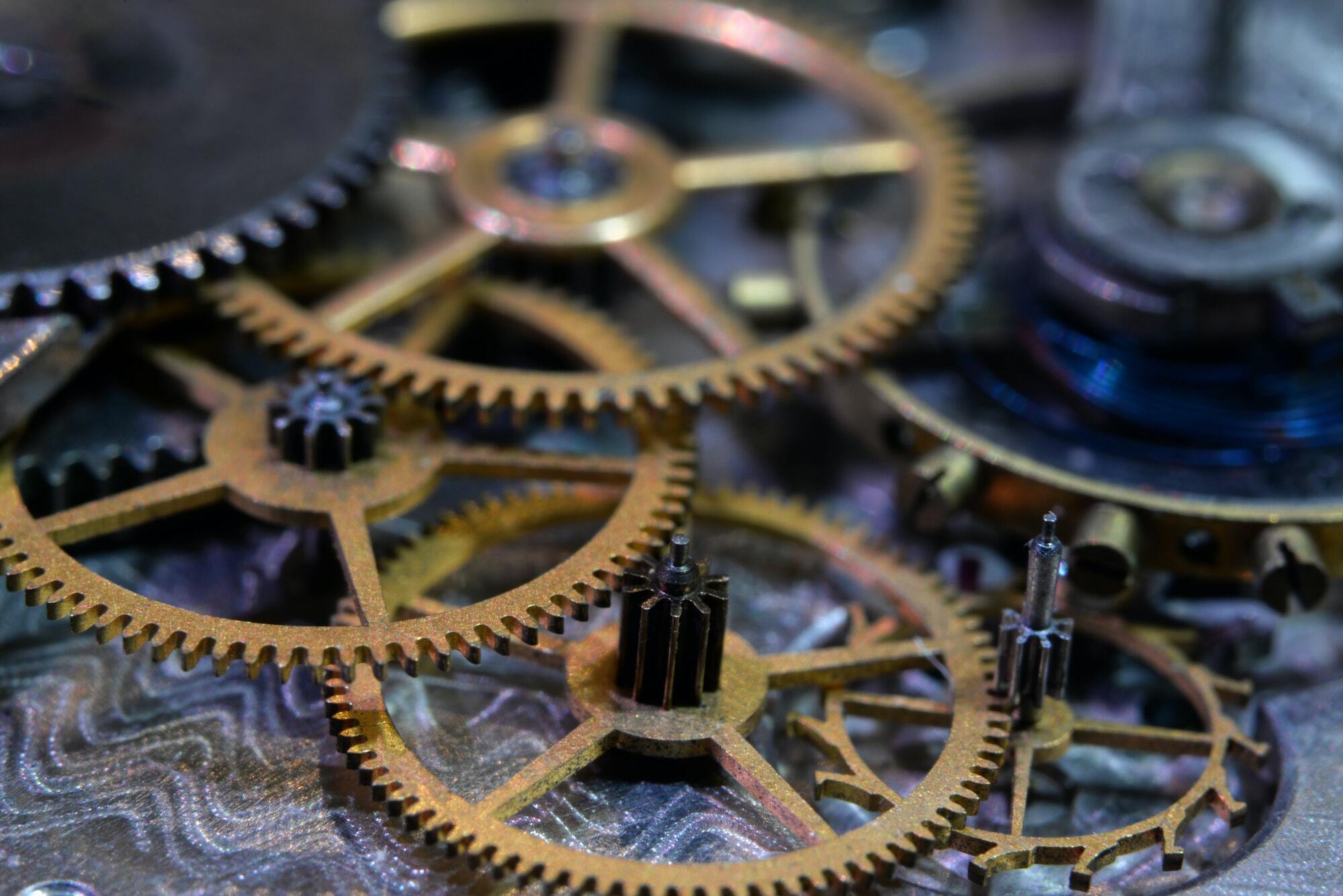Watches
Watch Movements: Quartz, Mechanical, and Automatic
Just because we know that something works, it doesn’t mean that we necessarily need to know how it works. If you think this way about the technologies of your day-to-day life, you’re not alone. However, even if you are not the type to take a microscope to every detail activity, we promise that understanding the mechanics of how a watch works is an important part of appreciating watches as the unique accessories that they are. Believe it or not, possessing a basic knowledge of watch movements can even help you make fashion decisions with a sort of clarity that was not available to you before.
In this article, we will go over what exactly a watch movement determines, as well as the implications of the three types of watch movements: quartz, mechanical, and automatic.
Table of Contents

What is a Watch Movement?
Many of us are all too familiar with the concept of a ticking clock, even if it was just an acquaintance made through days spent watching time move at an agonizing pace in the classrooms of our youth. However, have we ever thought about what exactly powers that clock’s tick? Hint: it’s not by source of magic.
A watch is given its ability to keep time by what are known as watch movements. A watch movement works as an internal system that handles a number of duties, whether it is to keep time, calendars, and even time zones. These specific duties are known as “complications” in the watch world, and they can be numerous. In fact, it is popular for watch brands to patent the complications that are unique to their company, with some luxury watch companies counting proprietary watch movements into the hundreds (we’re looking at you, Rolex).
However, no matter how many complications a watch includes, there needs to be a system for its movements to rely on. These movements are also sometimes called “calibers”. All watches must rely on one of three different types of movements: mechanical, quartz, and automatic. While they will all result in the telling of time, the way that they each reach this goal is quite different.
The 3 Different Watch Movements
1. Mechanical
Mechanical movements predate all other types of watch movements. Virtually unchanged for centuries, the mechanical watch relies on the power from what is known as a mainspring. This mainspring will either be powered by its own self-winding tool, or else it may rely on manual winding. The other main components of a mechanical watch include:
- A gear train, which transfers the energy from the mainspring to the balance wheel
- A balance wheel, which keeps the time by providing swings at a pre-set interval
- An escapement, which provides vibrations to the balance wheel and also results in a “ticking” noise
Complicated, isn’t it? And this is a very brief overview of how watches work. However, if you ask wristwatch experts, this nuance is all part of a mechanical watch’s charm. The complexity that is inherently involved in the manufacturing of a mechanical watch makes them a favorite choice among luxury watchmakers, particularly of the world-famous Swiss variety. In fact, prior to the emergence of the Quartz watch in 1969, all watches were, by definition, mechanical watches.
2. Automatic
Automatic watches, while technically a type of mechanical watch, are unique in their own right. Unlike traditional mechanical watches, automatic watches rely on the kinetic energy of a wearer’s wrist. The obvious advantage to the watch’s owner is that an automatic watch will not require manual winding, so long as it is worn on a regular basis.
An automatic watch will still have a mainspring, but it also has a special component that is known as a rotor. The rotor is responsible for transferring the energy from a user’s wrist to the mainspring.
Like most complicated watch movements in general, automatic watches are mostly found on the luxury market. Since their incubation in the 1920s, they have been a popular offering among luxury brands who want to offer their customers an exquisite piece of jewelry that is also a conversation starter.
3. Quartz
The quartz watch was nothing short of a game changer when it emerged on the scene in 1969 in Japan. The quartz watch keeps an accurate time through an innovative electrical signal that is regulated by a quartz crystal. This may sound like sorcery, but it’s really just an elaborate way of saying that a watch is battery powered.
Even if you do not currently own a watch, if you have a computer, phone, or any other piece of technology that keeps time, chances are that it relies on a quartz system. The fact that quartz movements rely on electricity means that they are extremely accurate, while at the same time affordable. They are also known for being low-maintenance as the occasional changing of a battery is not nearly as labor-intensive as any of the upkeep associated with manual movements.
As a quartz watch does not require an escapement, it is actually possible to tell quartz and mechanical watch movements apart by the naked eye (or, in this case, ear). While the transition between seconds will be smooth on a mechanical watch, a quartz-powered watch will make a noticeable “tick tock” motion.
Watch Movements: the Final Verdict
While it’s easy to see why quartz movements are the most likely to grace the wrists of the general public, there is something to be said about more complicated timekeeping systems, and not just if you’re a wristwatch aficionado. A mechanical watch, in particular, is a wonderful feat of human achievement, and being able to wear one as a testament to this is a privilege not lost on individuals with a lust for fashion.
FAQs
1. What watch movement does Rolex use?
As Rolex depends on a number of different watch movements, this answer will depend on your watch’s individual model. Rolex has relied on automatic, mechanical, and quartz movements in its history.
2. Can I change my watch’s movement?
Yes. Not only is it possible to do this, but it is also common. It is especially simple to replace a mechanical movement with a quartz movement. Converting a quartz watch to a mechanical watch, however, is much more complicated, though not impossible.
3. What’s the difference between a watch movement and a caliber?
There is no different between a watch movement and a caliber — they are the same thing!

